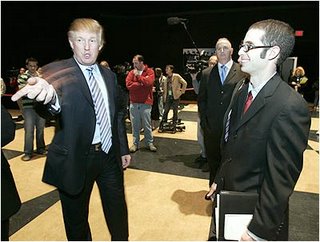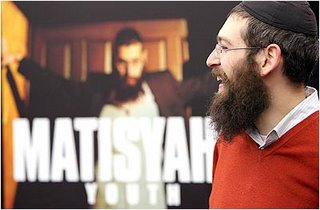
From: Los Angeles Daily News
www.dailynews.com
Kimberly Pandelios moved to Northridge from Florida so her husband could try his luck as a drummer. And so she, too, could seek fame and fortune.
Kim was an aspiring model with limited success sporting one-piece bathing suits and lingerie. Responding to a model-wanted ad in a local weekly, the 20-year-old mother drove into the Angeles National Forest to meet a photographer she knew only as Paul. She wanted the gig; her family needed the money.
She awoke that Thursday - Feb. 27, 1992 - with stars in her eyes. The mercury reached 87 degrees, the month's hottest day, and the sun shone brightly - ideal conditions for an outdoor photo shoot.
After taking her 13-month-old son, Nicholas, to a baby sitter, she drove to the Sherman Oaks home of a woman trying to start a men's lifestyle magazine. Kim was going to appear on its first cover. From there, she visited a salon en route to meeting Paul.
"Then," Los Angeles County sheriff's Detective Stephen Davis said, "she fell off the face of the Earth."
Peter Pandelios grew worried when his wife wasn't home for dinner. Paul had called at 2:30 to confirm his appointment with Kim and phoned again about 7 to say she had left her planner. But Peter thought he had to wait 48 hours to report her missing.
About 2,300 miles away in Reading, Pa., Magaly Spector learned of her newlywed daughter's disappearance but knew she hadn't run away. "I thought she had an accident," she said. "I went crazy. I called every hospital in L.A. I called funeral homes. I just went crazy."
Late that night, an off-duty police officer cutting across Angeles Forest Highway on his way home spotted a small fire in the passenger seat of a Chrysler Laser near the Monte Cristo Campground. By the time firefighters arrived, flames had engulfed the sports car. It was registered to Kim Pandelios of Northridge.
Over the following year, Kim's family feared the worst. A distraught Peter initially drove aimlessly about the city, hoping to spot his wife by chance. Exhausted, he crashed his car, abruptly interrupting his search.
Magaly kept developing empty theories to justify her daughter's disappearance. "One day I was thinking she was alive, and one day I was thinking she was dead."
A ringing phone was a fleeting celebration. She always answered with the expectation of hearing Kim's voice. It wasn't until March 1993 that she got the call that ended her optimism: Two gold miners had found a human skull and bones in the brush near the site where the Chrysler was found.
Investigators discovered handcuffs nearby and a black bra and panties that had been cut off.
"The whole thing collapsed," Magaly said - her theories, her hopes, herself.
Watching the evening news that night, Brad Leon saw Kim's photo and was convinced she was the same doe-eyed blonde he had seen a year earlier at the same site.
An off-road enthusiast, Leon had been driving along the dirt roads near the old Monte Cristo Gold Mine when he found a path new to him. He drove down it about 100 feet before encountering a makeshift camp.
There he made eye contact with a beautiful woman dressed for another occasion. It was a Saturday, two days after Kim disappeared. Suddenly, his Baja Bug was surrounded by three men he described as outlaw bikers, with long hair and tattoos.
"What's your problem, man?" one of the men repeatedly rasped as the three shook Leon's Bug. He sped out, not realizing the woman needed him, he said on a 1995 episode of the TV crime drama, "Unsolved Mysteries."
"If she would have given me an indication she was in trouble, of course I would have done something. But I didn't know," Leon lamented. "This person basically died because of my inaction, because of my ignorance."
The segment ended with host Robert Stack saying, "Kimberly's family and the Los Angeles County Sheriff's Department hope that the man named Paul, or someone who knows him, is watching our broadcast tonight. The authorities would like to emphasize that Paul is not a suspect but that he could be pivotal in solving this case if he still has Kimberly's missing appointment book."
A year later, Linda Sobek, a former Raiders cheerleader and swimsuit model who had posed for Playboy, was raped and murdered. There were uncanny similarities between her death and Kim's: They were brunettes posing as blondes; they were last seen alive going to photo shoots; their remains were found in the Angeles National Forest.
Authorities quickly identified Charles Rathbun as Sobek's killer. A photographer who cleaned up taking pictures of busty babes with sexy cars, Rathbun got life in prison without the possibility of parole and a made-for-TV movie. He was identified as a suspect in Kim's murder, but there was no evidence, except coincidence.
Investigators still hadn't located Paul.
David Rademaker had seen the "Unsolved Mysteries" episode about Kim. He told his girlfriend the theory posited on the show was wrong. And he believed the cops knew it and were trying to convince the killer to lower his guard and start making mistakes that would lead to his arrest.
It marked the second time Rademaker, who was in his early 30s at the time, had mentioned the young model's murder to Manya Ksendzov, his 15-year-old girlfriend. He previously told her he had been a person of interest in Kim's death because authorities found his phone number on her phone bill shortly before she vanished.
The third time it entered conversation proved a bit more frightening. On the phone, Ksendzov told Rademaker she was tired of being manipulated for sex. She wanted to date someone her own age.
He didn't take well to that idea and threatened to start sexual rumors about her, according to court testimony. He also warned her that she might suffer at his hands like the young model he raped after she resisted his advances in the forest.
Rademaker reminded Ksendzov of the trip they had made a few months earlier into that forest, how they pulled off the highway after driving for a while, and he wandered off. She assumed he had gone to urinate, but he told her he had been surveying the site where he drowned Kim and that he found one of her leg bones.
"He said ... she was pleading with him to let her go, that she wouldn't press charges, that she would just pretend it hadn't happened because she wanted to go home to her kid," Ksendzov recently testified.
She thought he was lying, trying to scare her. And it did, but not enough to report anything until her family sought statutory rape charges against him two years later. Even then, Rademaker was not named a suspect or arrested in Kim's murder.
Across the country, Kim's mother, brother, widower and son were trying to move on.
Nicholas had immediately returned to Pennsylvania to live with his paternal grandparents, with whom he still resides. After a few months, Peter left his job filling vending machines and returned to the Schuylkill Valley.
"It's something I'll never get over," he testified last month. "I'm the guy whose wife got murdered. That's who I'll always be."
Kim's family had moved to Reading, Pa., when she was 9. She was born Hossanna Spector on Nov. 13, 1971, in Cuba, where her father's Jewish family landed after fleeing the Communists in Russia. It was an ill-timed move, but that's where Roberto Spector met Magaly Bernal.
In 1980, they traded Castro for Jimmy Carter and immigrated to the United States on the Mariel Boatlift. It was a dangerous mission for the family, particularly because Kim's mother had become a national chess champion at a time when chess boards were the intellectual battlefield between Communist countries and democracies.
"I brought her here from Cuba to give her freedom and opportunity - and I lost her," said Magaly, who was completing her doctorate in physics when Kim's remains were found. Today, she is a global manager for Lucent Technology and is one of the leading Latina females in the United States, according to Hispanic Business magazine.
Kim was a cute kid with a wide smile, glowing cheeks and curly brown locks. In photos, she appears years beyond her age. But she seemed ashamed of her roots, friends said. She changed her name, wore blue contacts, dyed her hair.
"Image was very important to Kim, from her blond hair, to not keeping her name of Hossanna, to making sure everyone believed things were great for her," said Julie Chisholm, who as a child lived in the same apartment complex as Kim and spoke with her regularly as an adult.
After graduating from high school, Kim enrolled at Pennsylvania State University. She talked of becoming a computer scientist, but one night she visited a club where the band Gandolf was performing. She was smitten with the drummer, a skinny guy with long, wavy black hair.
She left Penn State to start a family with Peter. They briefly moved to Florida, where they married and Nicholas was born, before moving to Los Angeles in November 1991. Kim told Peter he had a few years to make a name for himself as a musician, her mother recalls. "If it doesn't work, we will go back," Kim said.
Her friends, though, thought Kim would become famous first, with her tanned skin and golden hair that hung to the waist of her 5-foot-2, 100-pound body.
"She was gorgeous," said Stephanie Stamm, an art teacher and hand model. "I figured ... Victoria's Secret will be next."
But L.A. wasn't LaLa Land. Money was tight, and Kim had an itch to return to school. She began looking into enrolling at California State University, Northridge. She was also burdened by the struggles of marriage, Chisholm said.
"She was more likely to call me when she wanted to complain," said Chisholm, who spoke with Kim just days before she was murdered. "She was not happy where her life was."
In late 2003, Sgt. Mike Robinson of the sheriff's cold-case homicide unit peered into the Kimberly Pandelios case and thought there were some workable leads. He asked Detective Thomas Kerfoot to look into it. Kerfoot asked for the assistance of Detective Davis, who had been one of the initial investigators.
Thumbing through old reports, Davis found a statement from Manya Ksendzov that piqued his interest. In a follow-up interview, Ksendzov told him that her ex-boyfriend, Dave Rademaker, had bragged of raping and murdering Kim.
Ksendzov was worried, too. The January 2004 interview occurred 13 days after Rademaker had been paroled. He had served six of his 12 years for his sexual relationship with Ksendzov during the mid `90s and for providing her with heroin.
She was eager to help the detectives; too eager, defense attorneys would later argue.
With Ksendzov's statement, Davis and Kerfoot began building a case against Rademaker, a 40-year-old registered sex offender who once ran a teen party line called The Zoo and lived with his parents in a small, hillside home in Burbank.
He was known to plant fliers for the phone line - like a pre-Internet chat room - at area junior high and high schools.
"Girls would call in and he'd get them hooked. Then he'd take away their user code so they would have to meet him to get it back," said Carlos Bas, a 42-year-old North Hollywood man who encountered Rademaker in the party-line underworld.
Flipping through an old LAPD missing-persons book, Davis found Rademaker's name listed as the boyfriend of a Cynthia Haddon during the time Kim was murdered.
He made several calls before he got Haddon's number.
"I've been waiting quite a while to talk," Haddon responded to Davis, according to court testimony.
She went on to explain that her ex-boyfriend had taken her into the Angeles National Forest on a February night in 1992 because he wanted to torch a sports car he had seen on the side of the two-lane highway.
Haddon agreed to use a special cell phone that would record her conversations with Rademaker. She had been asked by police to get him to talk about the night he torched Kim's car. And he did.
But in a dozen recorded conversations and one taped face-to-face meeting in a Denny's parking lot in Lakewood, Rademaker adamantly denied killing Kim. Arson would be his third strike under the state's "three strikes, you're out" law, and Rademaker assumed he was going to serve life in prison when Haddon told him she had spoken with police. Even then, though, he denied being a murderer.
"I didn't kill her - that's ridiculous," he said, according to the recording.
In their last phone conversation, Rademaker begged Haddon to meet him in person again so he could explain what happened in the forest. He spoke frantically and said he didn't know if he should commit suicide.
It wasn't safe for Haddon to meet him again, the detectives decided. It was time to make an arrest. They would go with the evidence they had.
"This is a bittersweet victory," Sheriff Lee Baca declared at a news conference outside sheriff's headquarters in April 2004. "The satisfaction is knowing we solved the case through bulldog investigative police work."
The monthlong trial began in January. It was more "Law & Order" than "CSI." There was no DNA, no new technology that helped crack the 14-year-old case. It hinged entirely on witness statements - specifically those from Ksendzov and Haddon. District Attorney Steve Cooley wanted the death penalty, and put two of his top prosecutors on the case.
Ksendzov testified that Rademaker had bragged about the murder. She talked about his strange sexual proclivities. And she said he had used aliases for his escort business - among them, Paul.
The defense saw Ksendzov as the prosecution's linchpin. Unlike with Haddon's testimony, which was rooted in recorded conversations with the defendant, they attempted to paint Ksendzov as a biased witness, a former heroin addict bent on seeing her ex "burn in hell."
"She blames him for using her, for getting her into drugs, for killing her successive boyfriend because he OD'd on drugs," defense attorney Chad Calabria said in his closing statement.
Defense attorneys argued that her story was inconsistent. She talked about Rademaker's escort service, but said he was faithful to her; she said he had an affinity for anal sex, but that they rarely engaged in it.
Lastly, the defense noted that in 1998, Ksendzov told two Los Angeles police detectives that Rademaker said Kim was one of his hookers, that he had had sex with her before sending her on her final assignment. Kim's family vehemently denies that she was involved in the sex business.
The defense called Brad Leon to testify about the incident he described on "Unsolved Mysteries," but the prosecution argued that while Leon was well-intentioned, it was not related.
Rademaker did not take the witness stand. His parents didn't come to his defense. (Neighbors said the Rademakers had not been seen for weeks, and a phone message left with his sister was not returned.)
The jury of eight men and four women deliberated for almost four days.
The verdict: guilty. First-degree murder with a special circumstance of kidnapping. Rademaker was sentenced Tuesday - 14 years and one day after Kim was murdered - to life in prison without the possibility of parole.
Kim's family flew into Los Angeles the day after he was convicted. The next day, Feb. 17, the family sat in a cold and largely empty ninth-floor hallway at the downtown courthouse. That's where Robert Spector, Kim's younger brother, spent his 23rd birthday.
Her father wasn't there. Roberto Spector had lost touch with his daughter and son after he and Magaly divorced in 1989. Nobody told him about the trial.
"Was he convicted of killing her? Was he sentenced to die yet?" Spector asked in a phone interview. "I'll be really happy to hear that."
Family members waited three hours before Magaly was called to the witness stand during the trial's penalty phase. Over the following two hours, the family explained how the defendant's actions shattered their lives. Then they spent the three-day weekend holed up in The New Otani Hotel in Little Tokyo. And they waited.
After penalty-phase closing arguments Feb. 23, Magaly, her husband and her grandson traveled to the murder site. Riding shotgun heading up Highway 2, Nicholas commented on the natural beauty of the rugged mountains.
"But this is really out there," said Nick, now 15. "I'm definitely thinking this would be a good place to kill somebody."
He has grown up without a mom. The closest thing he has to memories of her come from the home videos he watches with Magaly when she picks him up for the weekend once a month.
"I can remember just, like, a car or something like that. A flash here and there," he said.
The Monte Cristo Campground is about 15 miles north of La Caada Flintridge. Kim's family and Detective Kerfoot stopped at the ranger station to connect with Detective Davis and two Forest Service officers, who led them into the scrub oak, chaparral and manzanita where Kim's remains were found scattered about, likely by an animal.
"This is the creek where he drowned her?" Magaly asked.
She bent down and laid six white roses and a framed photo of Kim on a rock above the water. Then she began to read her daughter's favorite poem, "Los Zapaticos de Rosa" by the Cuban intellectual Jose Marti, which she remembers Kim reciting when she was young.
It sounded like Magaly was crying out for Kim to return as she sobbed through the 64-line poem. She bent down to the shallow creek, which Davis said had been a "rolling river" when Kim was drowned, and washed her hands.
"Listen to that water running: It is her life," Magaly said.
"I know how she was born ... and now I know how she died. And I know her soul is around - she went back to nature."





